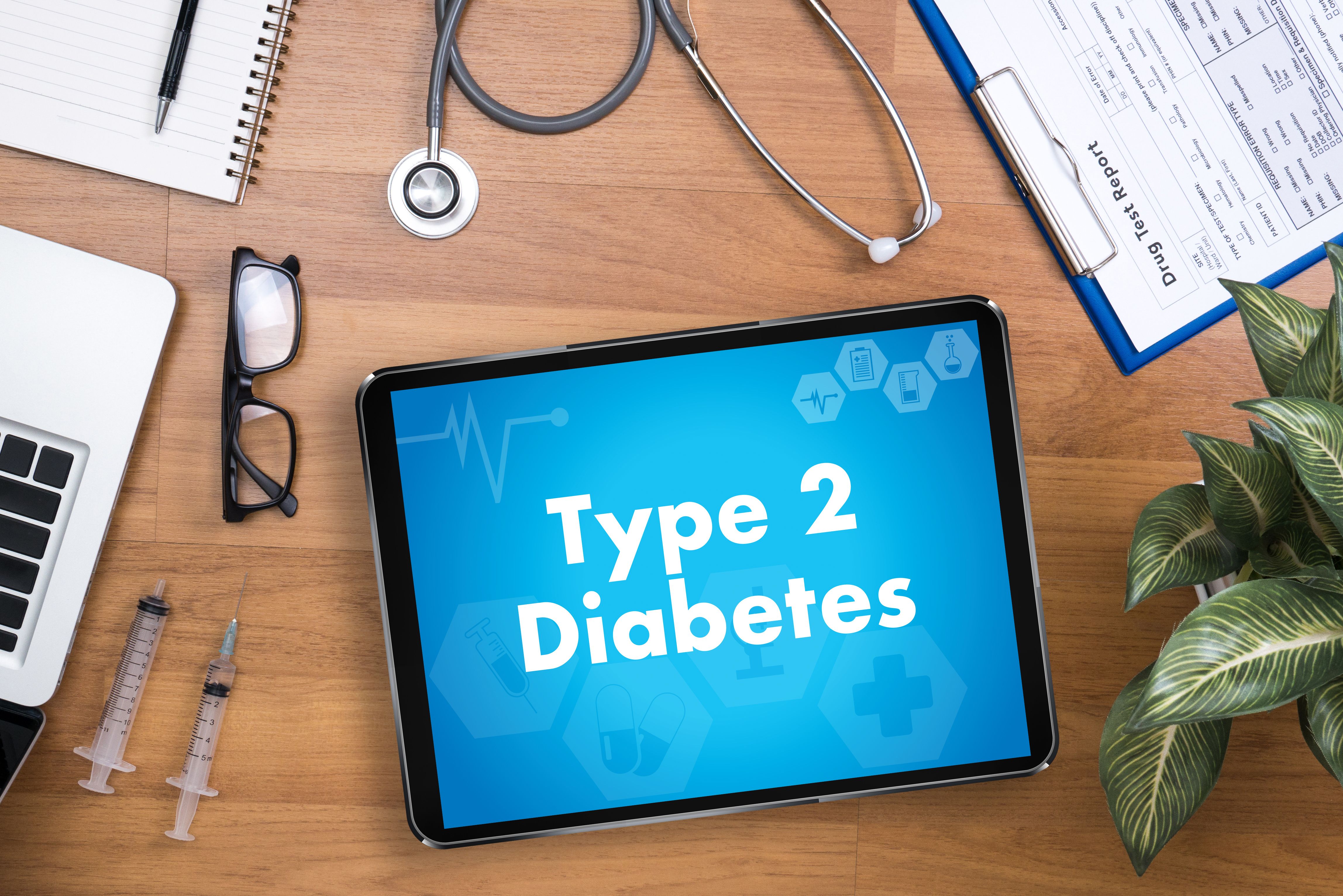- Bone Health
- Immunology
- Hematology
- Respiratory
- Dermatology
- Diabetes
- Gastroenterology
- Neurology
- Oncology
- Ophthalmology
- Rare Disease
- Rheumatology
Phase 1 Study Shows Promise for Dulaglutide Biosimilar
A biosimilar dulaglutide showed similar pharmacokinetic and safety profiles compared with the reference product Trulicity in healthy Chinese participants, according to a phase 1 analysis.
The pharmacokinetics (PK), safety, and immunogenicity were comparable after a single dose of HEC14028, a proposed dulaglutide biosimilar, or reference dulaglutide (Trulicity) in healthy Chinese adults, according to a phase 1 study published in Clinical and Translational Science.1
The authors said the findings could support additional clinical trials in patients and provide a robust data foundation for using HEC14028 as a dulaglutide biosimilar in China.
In 2021, 537 million adults worldwide had diabetes, with numbers expected to reach 783 million by 2045. | Image credit: onephoto - stock.adobe.com

Type 2 diabetes is a common metabolic disorder characterized by insulin deficiency and resistance, leading to high blood glucose levels. In 2021, 537 million adults worldwide had diabetes, with numbers expected to reach 783 million by 2045.2 In China, the diabetic population was 141 million in 2021, projected to rise to 170 million by 2045. Only 36.5% of Chinese adults with diabetes are aware of their condition, 32.2% receive treatment, and 49.2% of treated patients have adequate glycemic control.
GLP-1 aids in diabetes treatment but is quickly degraded in the body. Dulaglutide, a GLP-1 receptor agonist with an extended half-life, is administered weekly and approved for type 2 diabetes in many countries, including China. Several dulaglutide biosimilars are in development in China. Preclinical studies showed that HEC14028 is highly similar to dulaglutide.
The present study (NCT05459285) was a single-center, randomized, open, single-dose, parallel-controlled trial in healthy male Chinese adults at PKU Care Luzhong Hospital, Shandong. Subjects signed informed consent before screening and were assigned to either the HEC14028 or dulaglutide group. Each group had 34 subjects, who received a 0.75 mg subcutaneous dose. Blood samples were collected for PK and immunogenicity analysis. Subjects stayed at the clinic until day 8, with follow-ups until day 24.
Eligible participants were healthy males aged 18 to 45 years old with a body mass index between 19.0 and 28.0 kg/m². Exclusions included a history of certain diseases, previous dulaglutide use, and vaccine history. Blood samples were analyzed using the enzyme-linked immunosorbent assay for PK and a Meso Scale Discovery platform for antidrug antibodies (ADA), with further tests for neutralizing antibodies (Nab). Adverse events (AEs) were monitored and coded, with safety assessments including vital signs, electrocardiograms, physical exams, and laboratory tests.
Out of 220 screened subjects, 68 (30.9%; mean [SD] age, 27.5 [5.98]; male, 100%) were enrolled and randomized into the study: 35 received HEC14028 and 33 received dulaglutide. Sixty-seven subjects completed the trial, with 1 withdrawal from the dulaglutide group due to family affairs.
The primary PK end points showed equivalence between HEC14028 and dulaglutide. Secondary PK end points were also similar. Higher variability was noted in the dulaglutide group due to 1 subject with high plasma concentration. Immunogenicity results indicated no treatment-induced or boosted ADAs in either group. Safety profiles showed 52 treatment-emergent adverse events (TEAEs) in 35 subjects (51.5%), all of which were mild or moderate. No severe AEs or withdrawals due to TEAEs were reported.
In the biosimilar group, 23 TEAEs occurred in 15 subjects (42.9%), while in the dulaglutide group, 29 TEAEs occurred in 20 subjects (60.6%). The most common TEAE was an increase in blood triglycerides, likely due to changes in diet and activity during the study. All clinically significant abnormalities normalized by the end of the trial.
The main limitations were using only healthy subjects who were between 18 and 45 years of age. The authors concluded, “Elderly patients and adolescents will also use dulaglutide to treat [type 2 diabetes] in clinical practice. Additionally, safety cannot be fully evaluated in this single-dose study. Future research will continue to focus on gender and age factors and pharmacodynamics of blood glucose and insulin secretion."
References
Gao X, Di Y, Lv Y, et al. A pharmacokinetic study comparing the biosimilar HEC14028 and Dulaglutide (Trulicity®) in healthy Chinese subjects. Clin Transl Sci. 2024;17(4):e13775. doi:10.1111/cts.13775
IDF diabetes atlas 2021. International Diabetes Federation. 2021. Accessed July 23, 2024. https://diabetesatlas.org/atlas/tenth-edition/
BioRationality: EMA Accepts Waiver of Clinical Efficacy Testing of Biosimilars
April 21st 2025Sarfaraz K. Niazi, PhD, shares his latest citizen's petition to the FDA, calling on the agency to waive clinical efficacy testing in response to the European Medicines Agency's (EMA) efforts towards the same goal.
Biosimilars Development Roundup for October 2024—Podcast Edition
November 3rd 2024On this episode of Not So Different, we discuss the GRx+Biosims conference, which included discussions on data transparency, artificial intelligence (AI), and collaboration to enhance the global supply chain for biosimilars and generic drugs, as well as the evolving requirements for biosimilar devices.
BioRationality: Commemorating the 15th Anniversary of the BPCIA
April 8th 2025Affirming that analytical characterization is often sufficient for biosimilar approval, minimizing unnecessary clinical testing, and enhancing FDA-led education to counter stakeholder misconceptions are key recommendations put forth in this opinion piece by Sarfaraz K. Niazi, PhD.
Exploring the Biosimilar Horizon: Julie Reed's Predictions for 2024
February 18th 2024On this episode of Not So Different, Julie Reed, executive director of the Biosimilars Forum, returns to discuss her predictions for the biosimilar industry for 2024 and beyond as well as the impact that the Forum's 4 new members will have on the organization's mission.
BioRationality: How Developers Can Expand Their Monoclonal Antibody Biosimilar Portfolio
March 24th 2025Monoclonal antibodies lead biosimilar approvals because of their large market size, well-defined regulatory pathways, and technological feasibility, whereas other biologics encounter development challenges but may see increased adoption as regulatory frameworks advance.
Review Calls for Path to Global Harmonization of Biosimilar Development Regulations
March 17th 2025Global biosimilar regulatory harmonization will be needed to reduce development costs and improve patient access, despite challenges posed by differing national requirements and regulatory frameworks, according to review authors.
